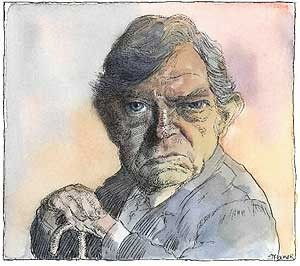
It’s little wonder women are more likely than men to agree to couples counseling. Counseling to mediate serious differences requires more than just serialized opinion-giving.
Generalizing about gender and communication is fraught with problems. As we would expect, there is considerable variability within individuals. And the idea of gender is undergoing tectonic shifts. But research in the area persists, always with interesting and sometimes conflicting outcomes.
One conclusion of special interest is the idea that men are more assertive. Based on research over the last several decades, analysts such as linguist Deborah Tannen have proposed that advocacy composed of open declarations, frequent opinion-giving, and summary judgments tend to be dominant in a typically masculine communication style. While admitting many variations from person to person, this trait is thought to be in contrast to a feminine style that emphasizes asking questions, giving feedback, and withholding early judgments.
I’ve always thought the distinction—though fuzzy—carried some validity. To be sure, the exceptions are numerous and notable. Take the case of former British Prime Minister Margaret Thatcher. People would come out of meetings with her with the complaint that they’d been “handbagged to death” with unilateral demands. That’s in sharp contrast to men like Bill Clinton, who can be more tentative and feminine in his relational patterns. Even so, listen to a group of men compare notes on the state of nation or likely matchups for a professional sports showdown. The odds are that you are probably going to hear a lot of opinion-giving, all freely offered to any and all listeners. Typically, each opinion is given serially, with each individual taking a turn, sometimes with an opposing introjection, but not as a part of a sustained search for agreement.
This is a feature in the political rhetoric of Donald Trump that can be so annoying. Qualifications, expressions of puzzlement, empathy, or the desire to first hear what the other side thinks: all of these seem to alien forms of address to the presidential candidate. By contrast, Hillary Clinton started her Senate career in 2000 with a “listening campaign.” And by all accounts she did listen, especially to upstate constituents. By contrast, Trump pontificates. Endlessly.
In my field some have made the claim that academic debate as a structured form of public discussion is a uniquely masculine style. Debaters learn not to over-qualify, not to admit to more than is necessary, and especially to cling tenaciously to the claims they’ve laid out in their case notes. It’s not such a big jump to the conclusion that women are much more likely than men to agree to couples counseling. Counseling to mediate serious differences requires more than just serialized opinion-giving.
What can be annoying in a political candidate like Donald Trump can be winning in a gifted thinker or writer.
But there’s a twist: what can be annoying in a political candidate like Donald Trump can be winning in a gifted thinker or writer. We often like decisive rhetoric if its well conceived. Think of Ernest Hemingway, Gore Vidal, William F. Buckley or David Remnick. The annoying comments of Uncle Fred at family get-togethers may just be a common variation: opinion-giving stripped of grace and wisdom.
My favorite writer in the masculine style was Robert Hughes. The native Australian who was Time Magazine’s art critic for many years has left us a body of provocative criticism, including wonderful books on Francisco Goya, the history of Rome, the unusual origins of his home country, and rise and fall of New York as a cultural mecca. His gifts for incisive criticism were formidable: occasionally ill-considered but always rich in following historical arcs. Consider Hughes dim view of American television after an unsuccessful stint in the late 1970s as a co-host on ABC’s 20/20:
You cannot watch network TV without being shouted at or wheedled, every two minutes, to buy something. This saturation is now so extreme that many cheesed-off viewers feel that commercials are the actual content of network television. And they may well be right, particularly if you agree that the chief purpose of network TV is to create an entirely fictive paradise of desire to which daily reality is merely a backdrop, a world so carefully rearranged that we don’t have to experience it. In this Paradise, information is replaced by infotainment, as events are constantly altered to fit the requirements of TV editing.
For millions upon millions of people, a vast audience, much larger than print can claim, TV has taken over their image banks, their modes of social expression, their dreams, their fears. TV creates the icons to which they look and the forms of homage they pay to them. And yet there are some things TV cannot do; and because it knows this, because it is not made by fools, TV favors and strives to create a mindset in which those things are not values. They include, for instance, the ability to sustain and enjoy a nuanced argument; to look behind the screen of immediate “iconic” events, to keep in the mind moderately large amounts of significant information, to remember today what some joker said last month. Instead it wants us to be content with a seductive blizzard of images, a fast surface a few electrons thick, full of what is called “information” but is in the main just emotively skewed raw data. It’s content lurches between violence and blandness, and it never, ever, stops. (The Spectacle of Skill, 2015).
All of this from a writer who died before having a chance to polish these words as part of a planned biography.
It’s perhaps a given that we expect critics to have opinions. That’s why we read them, whether men or women. And when they are this good, they elevate what can otherwise be an unproductive mode of address. So if it exists, the masculine style has its limits, especially as pertains to developing an empathetic interpersonal style. But it can also be bracing in the critic or analyst who has opinions worth listening to.
Comments: Woodward@tcnj.edu
